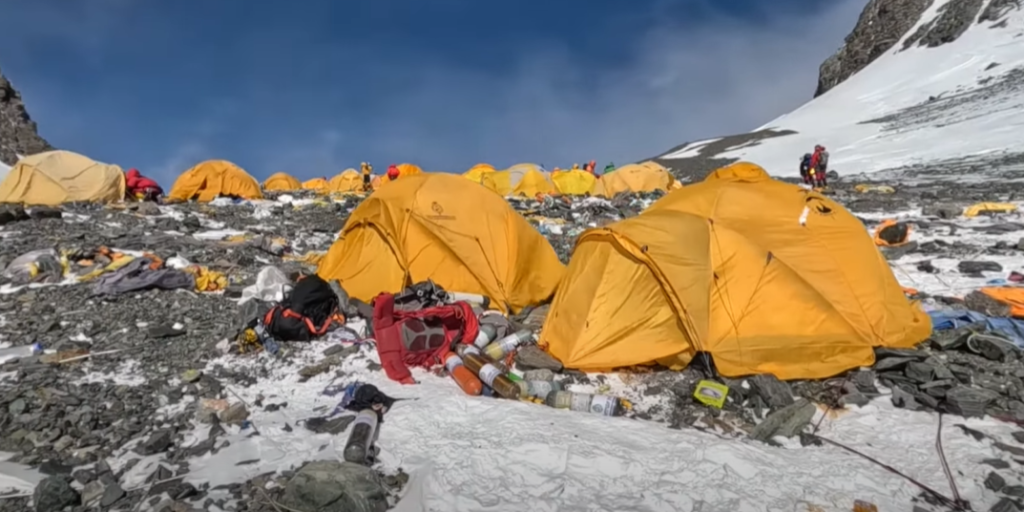The world’s highest peak is also the world’s highest junk pile.
Others are reading now
Every year, as summer approaches and temperatures on Mount Everest rise to around -19 degrees Celsius, the “highest garbage heap” on Earth undergoes a massive spring cleanup.
Reaching a staggering 8,848 meters, one might not expect this barren mountain to be littered with trash.
However, the annual cleanup operation addresses a season’s worth of waste left behind by climbers and adventurers — some of whom never left the mountain.
The cleanup team often finds empty oxygen bottles, sleeping bags, old tents, clothing, food packaging, stoves, empty water bottles, beer cans, and even bags containing human feces.
Also read
This Year’s Results
The result of this year’s major spring cleaning: eleven tons of garbage, four corpses, and a skeleton, according to the Nepalese army.
The troops needed 55 days to recover the waste and bodies from Everest and the nearby Himalayan peaks Nuptse and Lhotse.
It’s estimated that over fifty tons of garbage and more than 200 corpses remain on Everest. Removing the bodies is particularly challenging as they are often encased in ice and can weigh up to 150 kilograms.
For decades, NGOs have been working to clean up the world’s highest peaks. The Nepalese army has been deployed annually since 2019 due to the sheer volume of climbers and their waste. Since then, single-use plastic has been banned in the Everest region.
According to the BBC, in five cleanup operations, a total of 119 tons of garbage, 14 human corpses, and several skeletons have been collected.
New Regulations
Starting this year, a new regulation requires all mountaineers to carry poop bags to dispose of their excrement. These bags chemically and odorlessly break down the waste, addressing both environmental impact and air quality concerns.
Mingma Sherpa, chairman of the Pasang Lhamu community, told the BBC: “Our mountain stinks.”
He mentioned how waste — both human and factory-manufactured — has affected the quality of drinking water in the surrounding valleys.
To combat this, the government plans to set up a mountain ranger team to monitor garbage, according to Rakesh Gurung, the mountaineering director of the Nepalese Ministry of Tourism.
Drone Deliveries
On Thursday, a Chinese technology company conducted the world’s first successful drone delivery tests on Mount Everest.
The tests involved transporting 15 kilograms of oxygen cylinders and other supplies from the South Base Camp at an altitude of 5,364 meters to Camp 1, 700 meters higher.
The drone then returned to base camp with the same amount of garbage. Each climber leaves an average of eight kilograms of waste on the slopes.
Permit Limitations and Fees
This year, it is estimated that more than 600 people climbed Everest.
For the spring season, which ended in May, the government granted permits to 421 climbers, down from last year’s record of 478.
Following a Supreme Court order to limit the number of permits, prices are set to increase from $11,000 to $15,000 next year.
This year, eight climbers died, compared to 19 last year.



